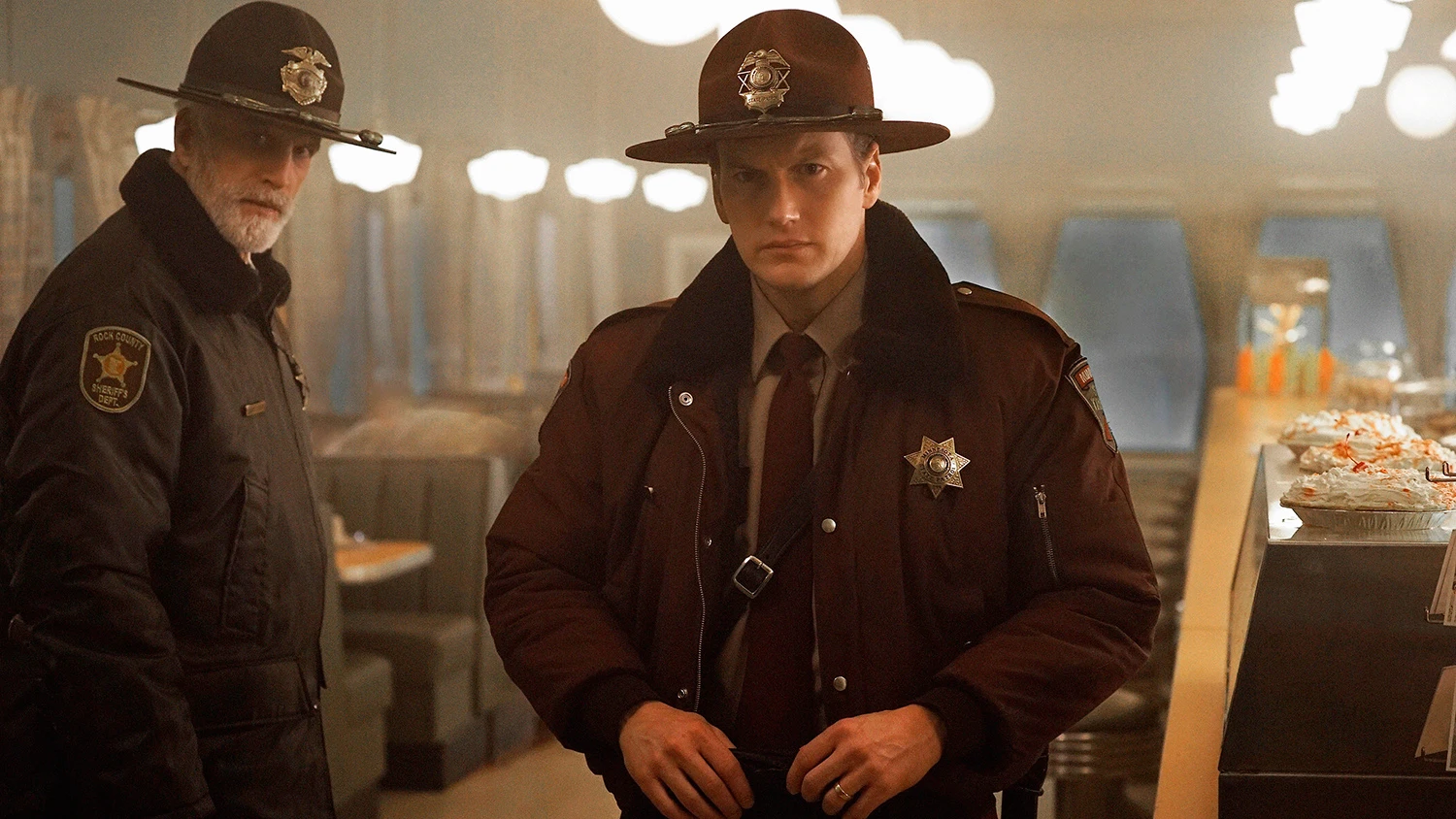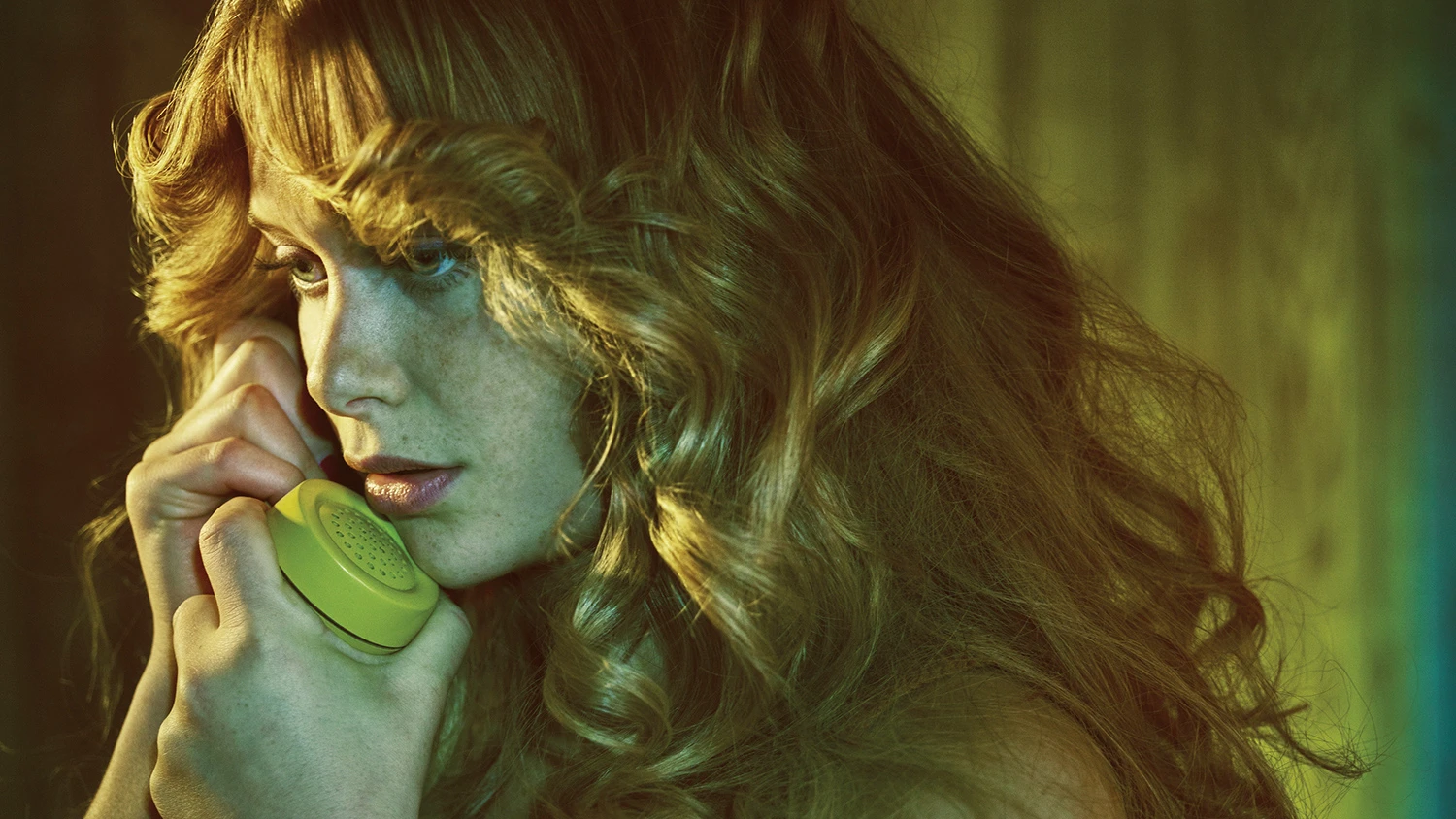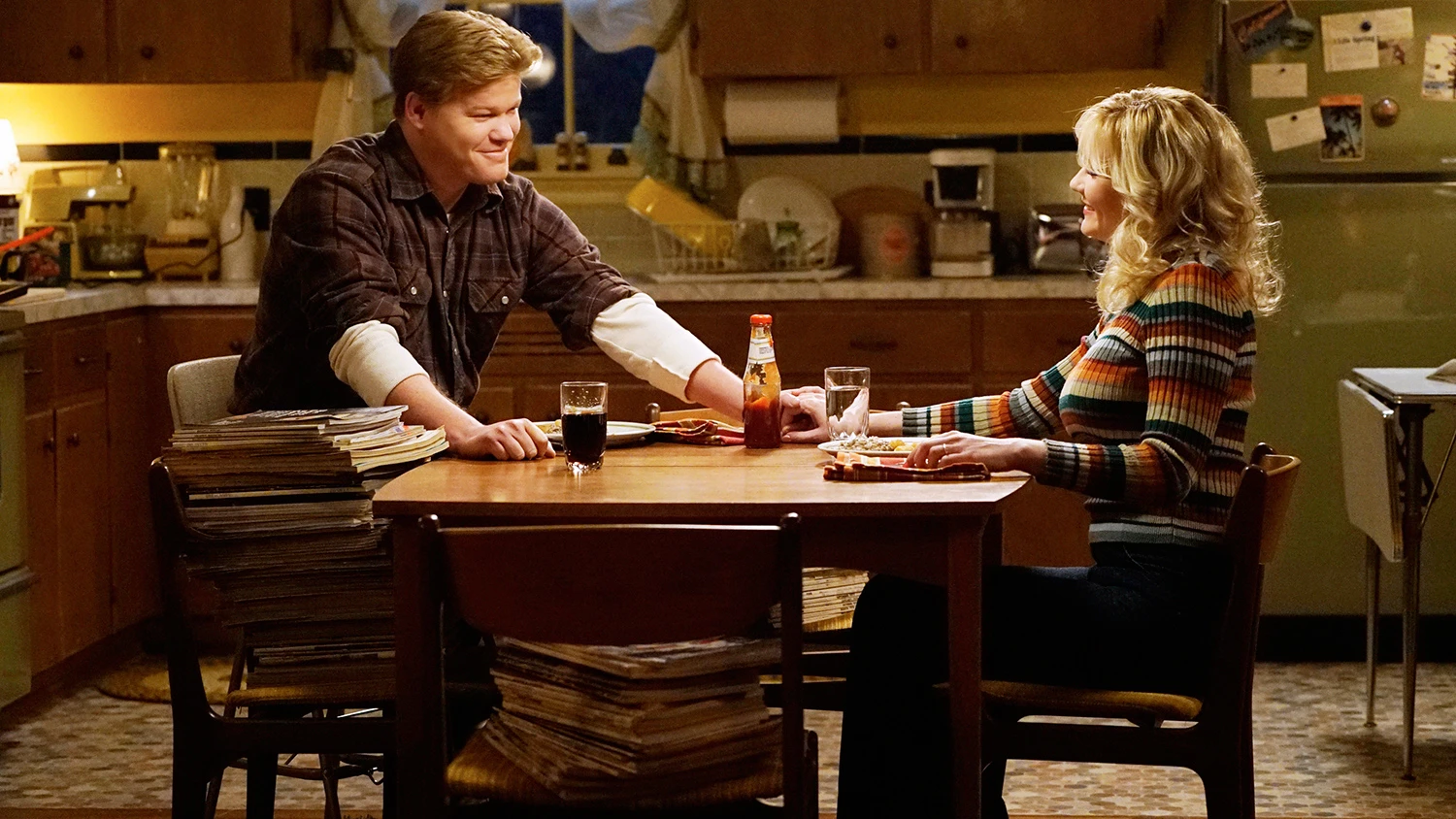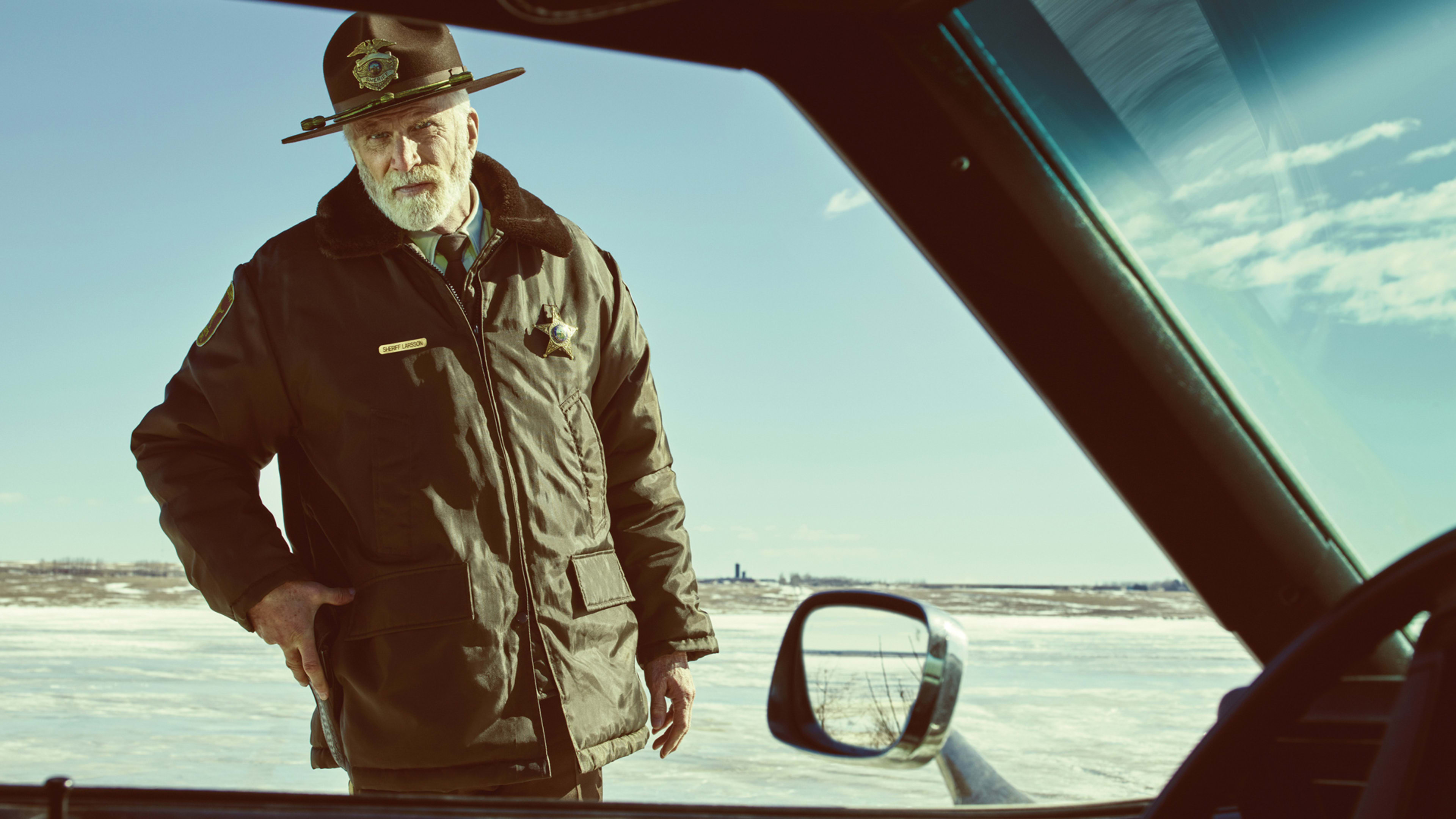It all started with a snow globe. The Emmy-winning miniseries inspired by Ethan and Joel Coen’s prairie noir classic Fargo might not have happened had it not been for the tiny figurine of Minnesota cop Marge Gunderson standing on blood-specked snow that sits on Warren Littlefield’s desk.
Littlefield received the gift from producers who pitched him an network adaptation of Fargo back when he ran NBC during its ER/Friends heyday. “I passed,” he recalls. “I just didn’t think we could do on network television in 1997 what the Coens did so brilliantly in their film.”
When he left NBC to become an independent producer, Littlefield found himself trawling for new ideas five years ago after ABC cancelled his short-lived series My Generation created by Noah Hawley. Littlefield says, “I always kept the snow globe close by, so I was staring at it one day and suddenly went “Oh my God, times have changed. We should do Fargo.”
Littlefield recruited Hawley and together they sold FX and rights holder MGM on a show that made no attempt to re-create characters or stories from the original 1996 movie. Instead, Littlefield says, “The most important goal was to make sure that the tone felt right. If we could find humor within the dark drama we presented, audiences would come back each week. Because lets face it, when somebody’s freezing their ass off in 30 degree below zero in the dead of winter and a body drops, that makes us laugh in really inappropriate ways.”
Fargo, which begins season 2 on October 12, again wipes the narrative slate clean. Set in 1979 Minnesota and South Dakota, the 10-episode story begins with a brutal waffle shop massacre. Tensions escalate when Kansas City interlopers led by Joe Bulo (Brad Garrett) and psychopath Mike Milligan (Bokeem Woodbine) challenge the Gerhardt crime family, anchored by matriarch Floyd (Jean Smart) her hothead son Dodd (Jeffrey Donovan) and his rebellious daughter Simone (Rachel Keller). Folksy cops Lou Solverson (Patrick Wilson) and Hank Larsson (Ted Danson) investigate the madness while accidental killers Peggy and Ed Blumquist (Kirsten Dunst and Breaking Bad‘s Jesse Plemons) try to keep their small town routines from imploding.

Comedic Actors Go Dark
Where Fargo season one coaxed stellar performances from then-unknown actress Alison Tolman, Texan Billy Bob Thornton and British Lord of the Rings star Martin Freeman this year’s story gives several actors known for their comedy chops a chance to go dark. “Because a number of our cast members have experience in comedy, they know how to throw a curve into a scene that makes you laugh and still deliver a very dramatic performance,” says Littlefield. “They have the ability to walk both roads simultaneously within the same scene, in a way where the comedy never compromises the drama.”
Case in point: when Garrett’s criminal enforcer Joe Bulo has breakfast with Woodbine’s assassin Mike Milligan, the conversation turns to shampoo. Littletfield explains, “The water in North Dakota is very hard, so Noah captured the situation: Okay, stone-cold killers have to eat, they have to shampoo, so how do we humanize them? The scene gives you a little window into who these guys are before they continue to carry out their mission, which is the brutal, bloody takeover of the Gerhardt crime family. We never want to undercut these killers in a way that makes the audience feels their threat isn’t lethal, but at the same time, we have to laugh at the moment because they’re talking about shampoo and Mike says, ‘Go ahead, feel my hair.'”

Buttoned Up Characters
Filmed in Calgary last winter, the new Fargo takes full advantage of its frigid backdrop to inform the characters’ tight-lipped behavior. “‘Fargo takes place in a world where everyone is buttoned up and covered up,” Littlefield says. “We find people in crisis but characters like Ed and Peggy Blumquist don’t wear their emotions on their sleeves, they don’t really know how to articulate what they’re feeling, so how do you get close to them? How do you feel for them? That’s part of the challenge of being in a ‘Fargo’ world and it’s also think what makes the storytelling really interesting.”

A 10-Hour Movie
By starting from scratch this year after earning 15 Emmy nominations for its first season, Fargo up-ended the traditional network model designed to capitalize on that which went before. Littlefield points out, “It’s not like on network television where you can put two people together and if they have real magic you go ‘Let’s do more of that next year.’ With Fargo, it’s ‘Guess what? They’re gone.”
Littlefield says he Hawley approached the new season as if they were making a 10-hour movie. “With a high level of insanity, we jumped off a cliff and said ‘1979, a different time, a different story, but still Minnesota and the Dakotas.”
The first few episodes pushes Fargo‘s spare aesthetic to the limit, incorporating split screen narrative, a score that alternates between lush orchestrations and dread-inducing noise, and a WTF opening sequence that appears to be black and white outtakes from an old western. Littlefield says, “We approached year two with huge ambition. Every pair of shoes, every belt, every shirt, every jacket, everything is period. All the picture cars are period pieces. We had to find the right toaster from the period, the right refrigerator. We even acquired lenses from the 1970s and put them on these state-of-the-art digital cameras to help get across the feel of where we are in place and time. Together with the music, the color palette–all of that helps bring us to this world that we want to access.”
Coen Brothers’ DNA
While the latest installment of Fargo operates within a timeline unrelated to its predecessors, Littlefield believes the show stays true to a unifying sensibility directly traceable to the original Cone Brothers movie. “From the beginning, we wanted to capture the DNA given to us by the Coens,” he says. “Noah likes to say it’s as if you walked into a library and found a large book called ‘True Crimes of the Midwest.’ There’d be a chapter in that book that might be the Coens movie, and a chapter that would be year one of the TV series Fargo, and then you’d have a chapter that’s year two. In that book, we tell these stories because ultimately, we see ‘Fargo’ as a state of mind.”
Recognize your brand’s excellence by applying to this year’s Brands That Matter Awards before the early-rate deadline, May 3.
